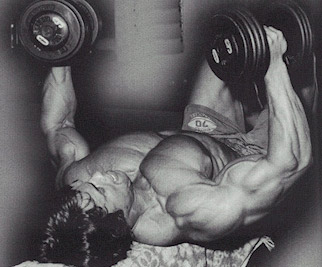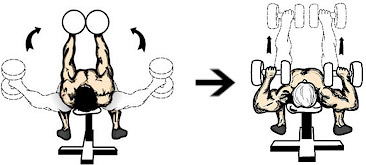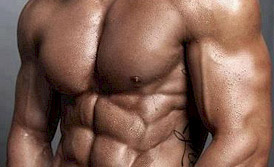IS PRE EXHAUST TRAINING EFFECTIVE?

“Hey Sean, what is your opinion on pre-exhaust training? My trainer recommended that I try using it to improve my chest growth.”
For those of you who aren’t aware of how the pre-exhaustion technique works, let me give a brief explanation…
What Is Pre-Exhaust Training?
Let’s use chest training as an example…
Now, typically when a lifter is looking to maximize their muscle gains they’ll be centering their workout around basic compound movements. When it comes to training the chest, this usually means a barbell or dumbbell press.
These movements are extremely effective at hitting the chest, however, they also heavily involve the use of the shoulders and triceps.
The pre-exhaust training technique reasons that since there is significant involvement of the shoulders and triceps during presses, the chest should first be “pre-exhausted” through the use of a single-joint isolation exercise.
In this case, the lifter would perform, say, a set of flat dumbbell flyes immediately followed by a bench press.

The flat dumbbell flyes would isolate the chest with almost no involvement from the shoulders/triceps. Then, when the lifter performs the bench press immediately after, their chest would be forced to work extra hard throughout the movement resulting in greater stimulation.
Some other examples would be:
– Leg extensions followed by squats
– Pullovers followed by chin-ups
– Leg curls followed by stiff-legged deadlifts
– Side laterals followed by overhead presses
Does Pre Exhaust Training Really Build More Muscle?

On paper it looks good, but in the real world it really doesn’t work the way it is intended to.
Recent studies using EMG technology (a technique that measures muscle activation during exercise) showed that when using pre exhaustion, muscle activation actually decreases.
The researchers performed the study using a leg extension followed by a leg press. 17 healthy males participated using both pre-exhaustion and straight sets, and the muscle activation of the quads was measured.
The results showed that when using the pre-exhaustion technique, muscle activation in the quads was actually lower as compared to a regular straight set.
So even though other muscles come into play during a straight set of a compound exercise, the target muscle still receives a greater stimulus for growth as compared to a set using pre-exhaust training.
The Bottom Line On Pre-Exhaustion?
If your goal is to build as much lean muscle size and strength as possible and in the shortest amount of time, I see no real reason to include the pre-exhaust training technique in your workout plan.
Pre-exhaustion decreases the amount of total muscle stimulation you can achieve, decreases the intensity of the workout and decreases the raw strength gains you can achieve.
If maximal muscle gains are what you’re after, stick to straight sets. Building muscle is about raw stimulation using basic movements and high intensity, with a focus on progression.
The only situation where I’ve found pre-exhaust training to be useful is when trying to work around an injury.
For example, let’s say you had a bad lower back and were getting some slight pain during the leg press. In this case it might be useful to pre-exhaust the quads first using a set of leg extensions.
That way you could still perform your set of leg presses with a high level of intensity, but with far less stress being placed on your lower back due to the lighter overall load.
This can also be used for shoulder issues by pre-exhausting the chest with flyes prior to your pressing movements.
If you found this article helpful, make sure to sign up for your FREE custom fitness plan below...




